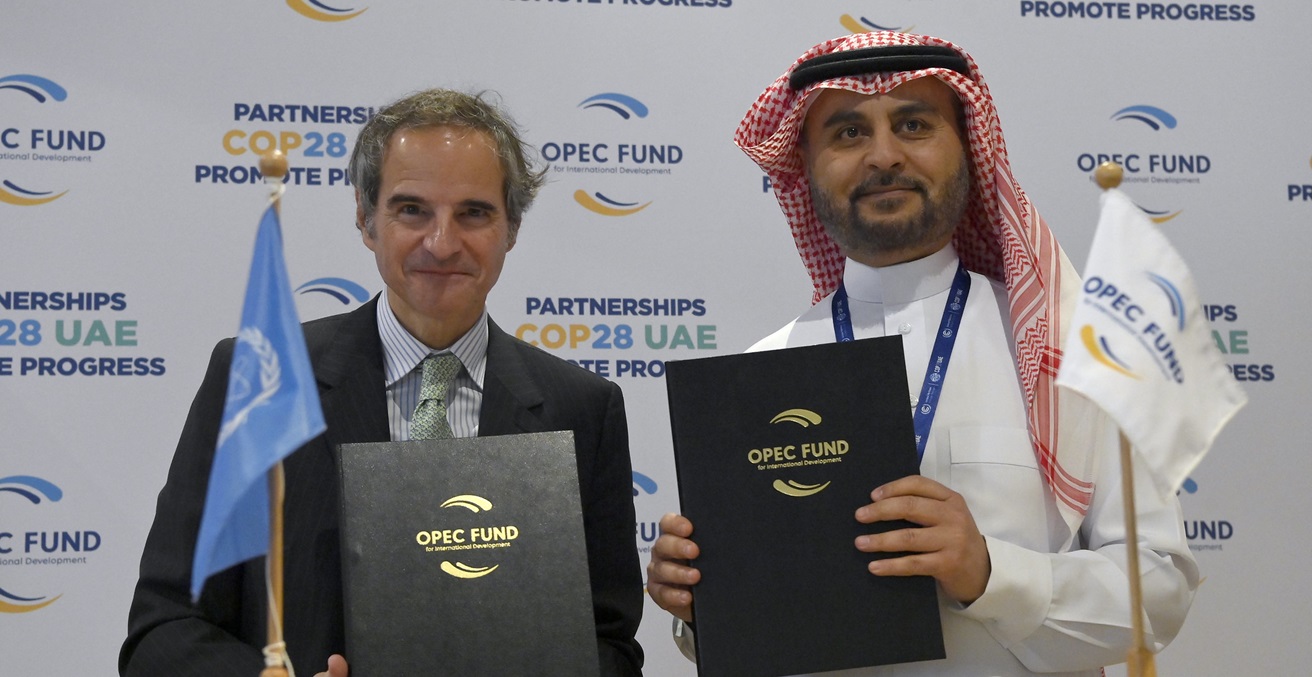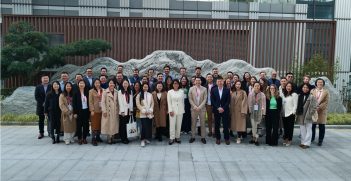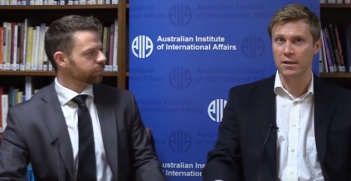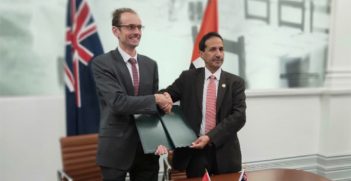Nuclear Power Seeks a Critical Mass at COP28

In an attempt to rebrand the Middle East as a techno-futuristic oasis for global exchange and innovation, the host of this years COP28 has attempted a bold movement toward nuclear energy production. Once the black sheep of clean energy, fission may be poised for a reawakening.
Once again, Earth is experiencing its hottest year on record. With this unwanted benchmark in mind, thousands of innovators, policymakers, financiers, and consultants have descended on the glittering gulf metropolis of Dubai to discuss the deepening crisis at the 28th United Nations Climate Change Conference, or COP28. In a city built on the oil trade, and famous for its opulence, degrowth as a climate action strategy is unlikely to feature prominently.
For some such as Al Jaber, the President-Designate for COP28, decarbonisation is the “largest economic opportunity since the first industrial revolution.” With his other roles as Emirati minister of industry and CEO of the Abu Dhabi National Oil Company it is perhaps no surprise that he insists a realistic energy transition must involve the fossil fuel industry. This sharp irony has drawn rebuke from progressive climate figureheads like Greta Thunberg and Al Gore, who bemoan “Big Oil’s” capture of the COP process on climate negotiations.
Against this contentious backdrop, the nuclear power industry is seizing the opportunity to reinvent itself in a forum where it has traditionally been disdained. The US is pushing for a tripling of global nuclear power capacity by 2050 with the “NetZero Nuclear” initiative, according to a Bloomberg. Since the start of the summit, signatures from 21 other nations, including France, Canada, Sweden, Ghana, South Korea, and the UK, have already been obtained. Only a few years ago, most of these countries had been phasing down their nuclear power, but now are opting for advanced reactor development and life extensions on existing plants.
US climate envoy John Kerry will also announce a “fusion strategy” in Dubai, in hopes that global collaboration will accelerate technological breakthroughs toward commercial nuclear fusion. This clean, wasteless, “silver bullet” energy solution is likely still decades away, but capitalising on nuclear’s current momentum can galvanise support for both fission today and fusion tomorrow. In August, Pew Research found 57 percent of Americans in favour of building new nuclear power plants, up from 43 percent just three years prior. Even in Japan, the site of the last major disaster, an annual poll showed support for restarting its idle power plants at 51 percent –a jump from 38 percent in 2022, and the first majority in favour since before 2011.
Nuclear engineer and advocate Mark Nelson posits that the rising sentiment is a natural product of humanity’s maturing relationship with nuclear technology. Today’s young decision makers are “nuclear natives” who grew up in the post-Cold War era and have been normalised to the existential threat posed by nuclear weapons. Rather than the nuclear holocaust feared by their parents and grandparents, Gen Y and Z’s popular imagination of the apocalypse is climate catastrophe. Organisations like Third Way, Good Energy Collective, and the Breakthrough Institute have provided a base for pragmatic climate activists increasingly recognising nuclear energy as nature’s ally rather than an enemy.
A breakdown in romantic conceptions of climate action may also factor into growing openness toward nuclear energy. Renewable energies, for all their progress and contributions thus far, have not managed to forestall climate change. Carbon taxes and other systems to reduce overall use and waste have struggled to gather momentum. And at the end of the day, the largest-emitting countries remain unwilling to compromise national security or economic priorities for emissions goals – perhaps with the exception of Germany. Even there, the “Energiewende” strategy is catching heat for a dampened economy under volatile energy prices.
Instead, abundance has become the mainstream refrain as politicians around the globe reconcile climate action with domestic priorities by promising more jobs, more supply, and more innovation to grow and solve our way out of the crisis. Compared to continued fracking and new oil drilling permits, advancing nuclear power with its superior energy density, lack of emissions, and potential for expansion are seen as a bipartisan slam dunk in US Congress.
Techno optimism for next-generation designs is also burying old perceptions. More than 80 “small-modular reactor” models are under development in a dozen different countries, demonstrating improvements in safety and production economics. These examples include Bill Gates’ Terrapower and Oklo, also chaired by Sam Altman of OpenAI fame. Katy Huff, US Assistant Secretary for Nuclear Energy, has likened the industry transition as going from the building of airports, which are bespoke engineering projects, to airplanes, which are serial process-driven products. This approach not only yields fewer variables for regulators to understand, but opens the door to creative new applications like powering ocean freight shipping or off-grid data centers.
But is this sanguine outlook all too familiar? Prior generations similarly envisioned a future of abundance coming out of World War II, with atomic cars, and energy “too cheap to meter.” Then there was the nuclear renaissance of the 2000s – a new millennia’s more mature expression of the technology to tackle global warming without compromising on growth. Both movements were afflicted by cost overruns and safety fears before ultimately succumbing to the aftermath of disastrous meltdown events – Chernobyl in 1986, and Fukushima Daiichi in 2011.
Proliferation concerns also loom. Since the early days under US President Dwight D. Eisenhower’s “Atoms for Peace” nuclear power transfer program, states have found ways to divert technologies toward building clandestine weapons programs. A few, like India, Pakistan, and Israel, were eventually successful. The addition of each new nuclear-armed nation has shaken world politics and the global security landscape, contributing to the gradual dilution of US hegemony since its unipolar moment in 1945. But even these issues have not managed to halt nuclear power development. In fact, they are now testament to the durable demand for reliable baseload power, as well as to technocrats’ desperation in the pursuit of realistic climate solutions.
Brussels and Berlin remain firmly opposed to nuclear, but the world is moving forward with it anyway. China and India are leading ambitious build outs of new nuclear power capacity. Meanwhile, a diverse cohort of newcomers from Southeast Asia to Sub-Saharan Africa are laying the groundwork to obtain their own reactors. COP28’s host also happens to be the Middle East’s forerunner in nuclear power. Just this month the UAE licensed a new reactor at its Barakah Power Plant, expecting the site to soon provide up to a quarter of the country’s electricity, and later generate pink hydrogen for export.
Dubai, Riyadh, and the Middle East’s other power centers are attempting to rebrand as techno-futuristic oases for global exchange and innovation, dovetailing aptly with COP28’s focus on financing the green energy transition. Advanced nuclear is capital-intensive, and will demand long-term government support and international collaboration to cement its place as a key solution in the global energy transition. But in an age where trust seems in short supply, will the results outweigh the costs and the risks? The US seems to think so.
Brandt K. Mabuni is a resident WSD-Handa Fellow at Pacific Forum and a working group member on nuclear policy issues with the BASIC Emerging Voices Network. His research centers on energy statecraft, climate finance, and nuclear safeguards. He holds a master’s degree in Asian International Affairs from the University of Hawaii at Manoa.
This article is published under a Creative Commons License and may be republished with attribution.





